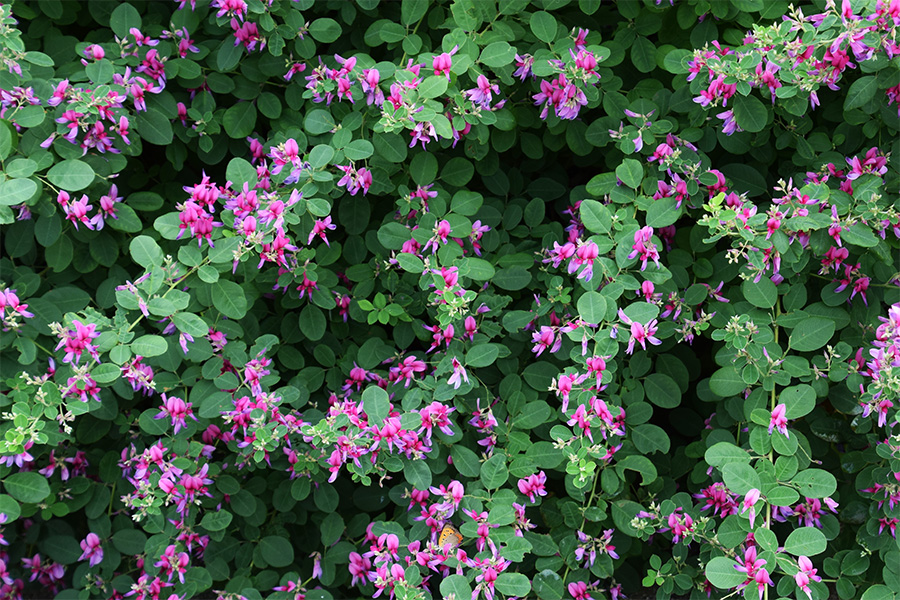Turfgrass
-

Grasscycling is the natural recycling of grass clippings by leaving them on the lawn after mowing. Grasscycling saves time, effort and, when done properly, is good for the environment and health of the grass. This publication describes the process of grasscycling, a practical and environmentally responsible way of recycling grass clippings in the landscape.
Clint Waltz and Becky Griffin
|
-

B 911
Bermudagrass in Georgia
Bermudagrass (Cynodon spp.) is an important warm-season, perennial, sod-forming forage grass in Georgia and throughout the Southeast. Bermudagrass is productive from spring until fall and is well-suited for grazing or hay production. Several varieties of bermudagrass are used in Georgia, ranging from common bermudagrass to the high-yielding, good quality hybrid bermudagrasses. The best variety to use depends on your location in the state and the intended use.
R. Dewey Lee, Dennis Hancock, Patrick E McCullough, Glendon H. Harris, and Timothy R. Murphy
|
-

This publication outlines plant persistence and animal performance characteristics of novel endophyte-infected tall fescue and provides recommended pasture renovation practices.
Dennis Hancock
|
-

This is a biennial publication containing the proceedings of the turfgrass research field day carried out at the UGA Griffin Campus every other year. The guide provides professionals with continuous, real time access to the latest up-to-date information about turfgrass research studies, products, and turfgrass Extension activities, programs, and outreach.
Topics will include, but are not limited to, crop and soil science, agronomy, weed science, plant pathology, entomology, economics, tissue culture, urban agriculture, irrigation, and student posters.
Alfredo Martinez
|
-

A regular fertilization program is important to maintain healthy, attractive turf and should include applying the correct analysis of fertilizer, using the correct amount, and fertilizing at the proper time. Turfgrasses require a number of nutrients for growth. Three of these—carbon, hydrogen, and oxygen—are rarely lacking because grasses get these elements from carbon dioxide in the atmosphere and water from the soil.
The remaining eighteen essential elements are also obtained from the soil. Nitrogen (N), phosphorus (P), and potassium (K) are needed in the highest concentrations. These major elements are commonly supplemented with fertilizer. The three numbers on the front of fertilizer bags are often called the ”N-P-K” numbers.
In addition to these major nutrients, secondary nutrients and micronutrients are also essential for plant growth. Understanding fertilizer terminology and the different types of nitrogen sources is important when establishing a lawn management plant. Nontraditional or “organic” fertilizers are also an option for homeowners.
Clint Waltz and Becky Griffin
|
-

C 918
Mole Crickets in Turf
Mole crickets are serious pests of Georgia turf. Estimates of mole cricket losses in commercial, recreational and residential sod now exceed $20 million annually. Weather and soil conditions in Georgia’s Coastal Plain region are ideal for mole crickets, and damage continues to increase.
William G. Hudson
|
-

White grubs are the larvae of scarab beetles. All are C-shaped, white to dirty white in color, with a brownish head and legs.
William G. Hudson
|
-

Spring dead spot (SDS) is a persistent and destructive disease of bermudagrass (Cynodon sp.) in Georgia. The disease can be problematic on lawns, landscapes, golf courses (bermudagrass greens, tees and fairways) and sports fields. The disease is particularly prevalent and damaging in north Georgia, especially in the Piedmont region. However, SDS can be observed throughout the state after harsh winters and in areas where bermudagrass has been exposed to freezing temperatures for extended periods of time. The disease has also been observed in zoysiagrass, although less frequently. This publication explains how to identify and control Spring Dead Spot in lawns in Georgia.
Clint Waltz and Alfredo Martinez
|
-

This publication describes ways to identify and control Lespedeza in turfgrass, including cultural control methods, preemergence herbicides and postemergence herbicides.
Patrick E McCullough
|